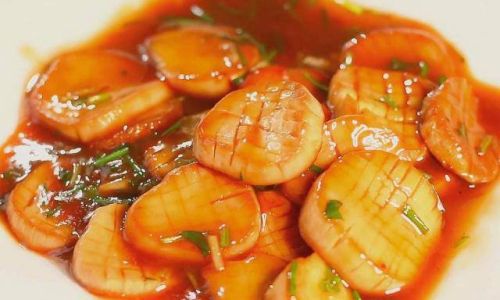Table of content
Abalone, a prized mollusk revered in global cuisines for its tender texture and briny sweetness, has long been a symbol of luxury and culinary refinement. Often referred to as “the sea’s most exquisite gem,” this marine snail demands respect in the kitchen. While its reputation for being challenging to prepare is well-founded, mastering the techniques to cook abalone can transform it into a dish that dazzles the palate. This article delves into the intricacies of selecting, preparing, and cooking abalone to perfection, ensuring every bite is a celebration of the ocean’s bounty.

Understanding Abalone: A Brief Introduction
Before diving into cooking methods, it’s essential to appreciate what makes abalone unique. Found in coastal regions worldwide, including Australia, Japan, South Africa, and California, abalone clings to rocky shores and feeds on seaweed. Its meat, a firm yet delicate muscle, is encased in a iridescent shell that has been prized for centuries in jewelry and decorative arts.
There are over 100 species of abalone, but the most common culinary varieties include Haliotis rubra (blacklip abalone), Haliotis discus hannai (Japanese abalone), and Haliotis midae (South African abalone). Each type offers subtle differences in flavor and texture, but all share a rich, umami-forward taste that pairs beautifully with bold seasonings and complementary ingredients.
Nutritionally, abalone is a powerhouse. Low in fat and high in protein, it’s rich in essential minerals like iodine, magnesium, and selenium, as well as vitamins B12 and E. Its health benefits, combined with its gourmet status, make it a sought-after ingredient for special occasions.
Selecting and Storing Abalone
The journey to a perfect abalone dish begins with sourcing the freshest possible specimen. If you’re fortunate enough to harvest wild abalone (check local regulations, as many species are protected), look for live specimens that cling tightly to their shells. Their flesh should be moist, firm, and free of discoloration.
For most home cooks, purchasing abalone from reputable fishmongers or specialty markets is more practical. Fresh abalone should be stored on ice and cooked within 24 hours. Frozen abalone, while convenient, requires careful thawing in the refrigerator to preserve texture. Avoid abalone with a strong fishy odor, as this indicates spoilage.
Preparation: The Key to Tender Abalone
Abalone’s reputation for toughness stems from its muscular foot, which can become chewy if mishandled. Proper preparation is non-negotiable. Here’s a step-by-step guide:
-
Cleaning:
- Remove the abalone from its shell by inserting a blunt knife (a sturdy spoon works too) between the meat and the shell. Gently pry until the meat releases.
- Trim away the dark, inedible parts, including the viscera and the tough frill around the edge.
- Rinse the meat thoroughly under cold water to remove sand and debris.
-
Tenderizing:

- Abalone’s muscle fibers are dense, so tenderizing is crucial. Use a meat mallet to pound the flesh gently but firmly. Aim for even thickness to ensure consistent cooking.
- Alternatively, marinate the abalone in a mixture of acidic ingredients (like lemon juice or vinegar) and enzymes (such as pineapple or kiwi). The acid breaks down proteins, while enzymes further soften the meat. A 30-minute marinade suffices—over-marinating can turn the meat mushy.
-
Slicing:
Slice the abalone against the grain into thin strips or medallions. This maximizes tenderness and ensures even cooking.
Cooking Methods: From Stir-Fry to Steaming
Abalone’s versatility shines through various cooking techniques. The key is to cook it briefly over high heat to retain moisture and tenderness.
Stir-Frying: The Classic Approach
Stir-frying is the most common method for abalone, as it preserves the meat’s delicate texture while infusing it with aromatic flavors.
Ingredients (Serves 4):
- 4 medium abalones, cleaned and sliced
- 2 tbsp vegetable oil
- 3 garlic cloves, minced
- 1-inch ginger, julienned
- 1 red bell pepper, thinly sliced
- 1 cup snow peas, trimmed
- 3 tbsp oyster sauce
- 1 tbsp soy sauce
- 1 tsp sesame oil
- 1 tbsp cornstarch (mixed with 2 tbsp water)
- Salt and white pepper to taste
Instructions:
- Heat the oil in a wok over high heat until smoking.
- Add garlic and ginger, stir-frying for 30 seconds until fragrant.
- Toss in abalone slices and stir-fry for 1–2 minutes. Overcooking will toughen the meat, so timing is critical.
- Add bell peppers and snow peas, stir-frying for another 2 minutes.
- Stir in oyster sauce, soy sauce, and sesame oil. Toss to coat.
- Thicken the sauce with cornstarch slurry, stirring until glossy.
- Season with salt and pepper. Serve immediately with jasmine rice.
Pro Tip: For an extra layer of flavor, add a splash of Shaoxing wine or mirin during stir-frying.
Steaming: Preserving Purity
Steaming highlights abalone’s natural brininess, making it ideal for minimalist preparations.

Ingredients (Serves 2):
- 2 large abalones, cleaned
- 3 slices fresh ginger
- 2 green onions, cut into 2-inch segments
- 1 tbsp light soy sauce
- 1 tsp sesame oil
- 1 tbsp cilantro, chopped
Instructions:
- Place abalones on a heatproof plate. Top with ginger and green onions.
- Steam over boiling water for 5–7 minutes, depending on thickness.
- Remove from heat and discard ginger and green onions.
- Drizzle with soy sauce and sesame oil. Garnish with cilantro.
- Serve hot with steamed rice.
Variation: For a richer dish, replace soy sauce with a mixture of melted butter and minced garlic.
Grilling: Smoky Indulgence
Grilling imparts a smoky char that contrasts beautifully with abalone’s sweetness.
Ingredients (Serves 4):
- 4 abalones, cleaned and sliced into medallions
- 2 tbsp olive oil
- 2 garlic cloves, minced
- 1 lemon, zested and juiced
- 1 tsp smoked paprika
- Salt and black pepper to taste
- Lemon wedges for serving
Instructions:
- Preheat a grill to high heat.
- In a bowl, toss abalone slices with olive oil, garlic, lemon zest, paprika, salt, and pepper.
- Grill for 1–2 minutes per side until lightly charred.
- Squeeze lemon juice over the abalone before serving.
Pairing Suggestion: Serve with grilled asparagus and a crisp Sauvignon Blanc.
Advanced Techniques: Ceviche and Sous-Vide
For adventurous cooks, abalone lends itself to innovative preparations.

Ceviche:
Marinate thinly sliced abalone in lime juice, diced mango, red onion, cilantro, and jalapeño for 30 minutes. The acid “cooks” the meat, resulting in a refreshing appetizer.
Sous-Vide:
Seal abalone slices in a vacuum bag with butter, herbs, and lemon. Cook at 55°C (131°F) for 45 minutes for buttery tenderness.
Common Mistakes to Avoid
- Overcooking: Abalone turns rubbery if cooked beyond 2–3 minutes. Use high heat and short cooking times.
- Skipping Tenderizing: Pounding or marinating is non-negotiable for tender results.
- Overcrowding the Pan: Cook abalone in batches to prevent steaming, which leads to toughness.
- Underseasoning: Abalone’s mild flavor benefits from bold seasonings. Don’t shy away from garlic, ginger, or chili.
Serving Suggestions and Pairings
- Wine Pairing: A crisp Chardonnay or a lightly oaked Sauvignon Blanc complements abalone’s brininess.
- Sides: Steamed jasmine rice, sautéed greens, or roasted potatoes balance the dish’s richness.
- Garnishes: Fresh herbs (cilantro, chives), toasted sesame seeds, or a drizzle of chili oil add visual appeal and flavor.
Cultural Significance of Abalone
Abalone has deep roots in global culinary traditions. In Chinese cuisine, it’s a symbol of abundance and is often served during Lunar New Year. Indigenous Australians have long harvested abalone as a sacred food source, while in Japan, awabi (abalone) is a key ingredient in sushi and chawanmushi (steamed egg custard).
Conclusion: Elevating Abalone from Challenge to Triumph
Cooking abalone is an art that rewards patience and precision. By understanding its anatomy, employing proper tenderizing techniques, and choosing the right cooking method, even novice cooks can achieve restaurant-worthy results. Whether stir-fried, steamed, or grilled, abalone offers a taste of the ocean’s elegance—a dish that impresses guests and satisfies the soul. So, the next time you encounter this prized mollusk, embrace the challenge. With the right approach, you’ll unlock a culinary treasure that lingers in memory long after the last bite.






0 comments